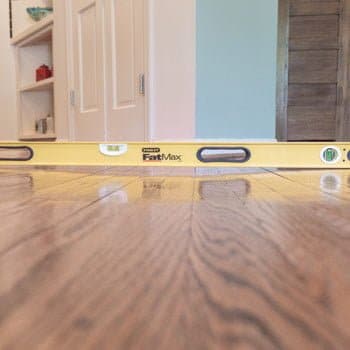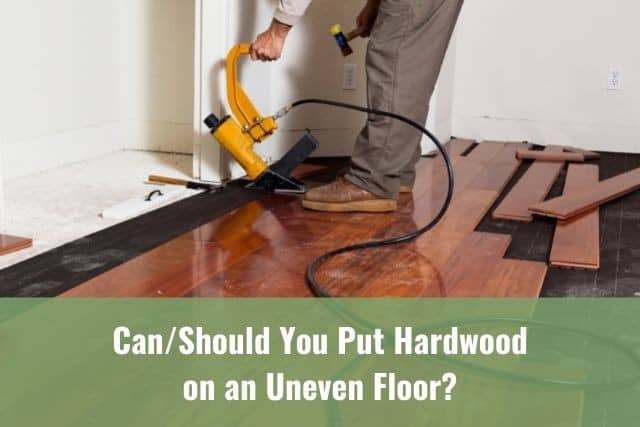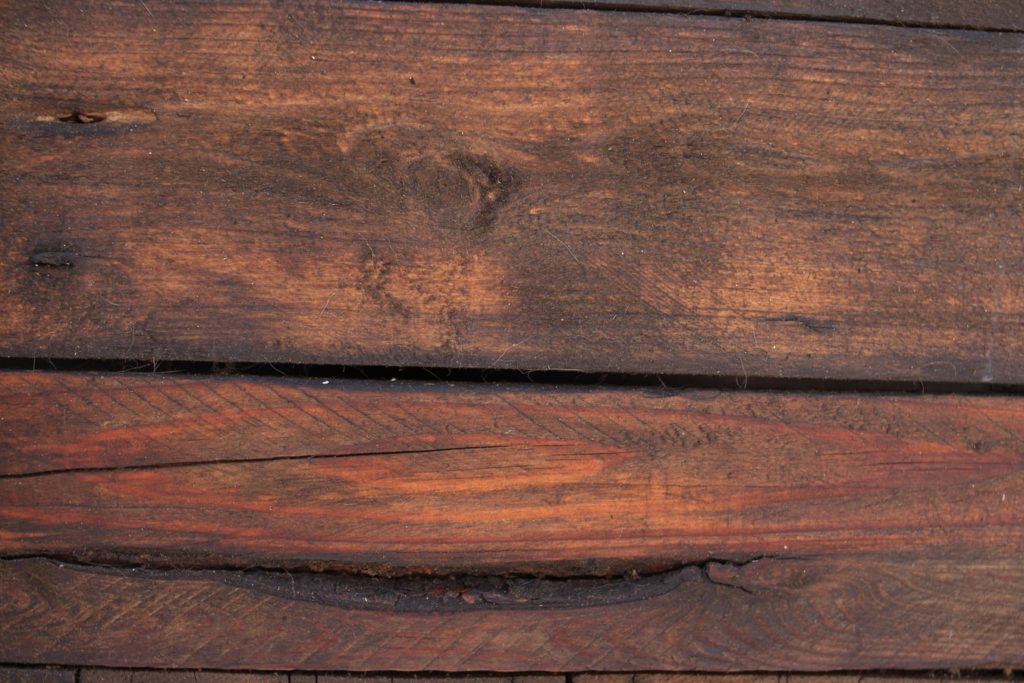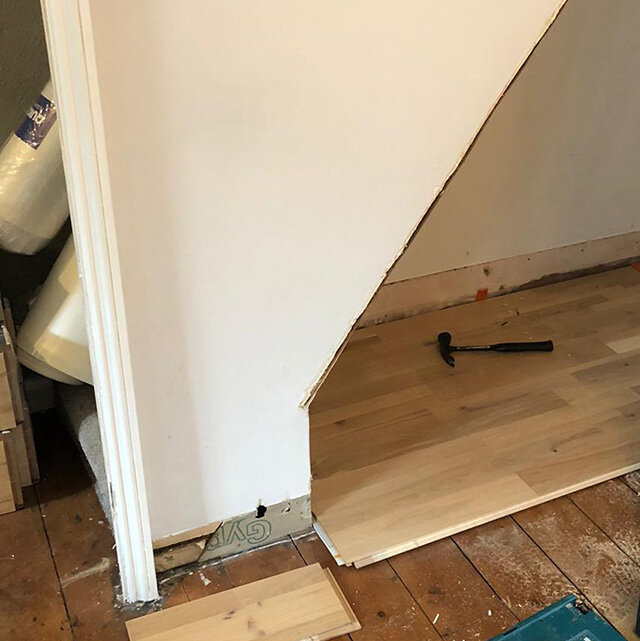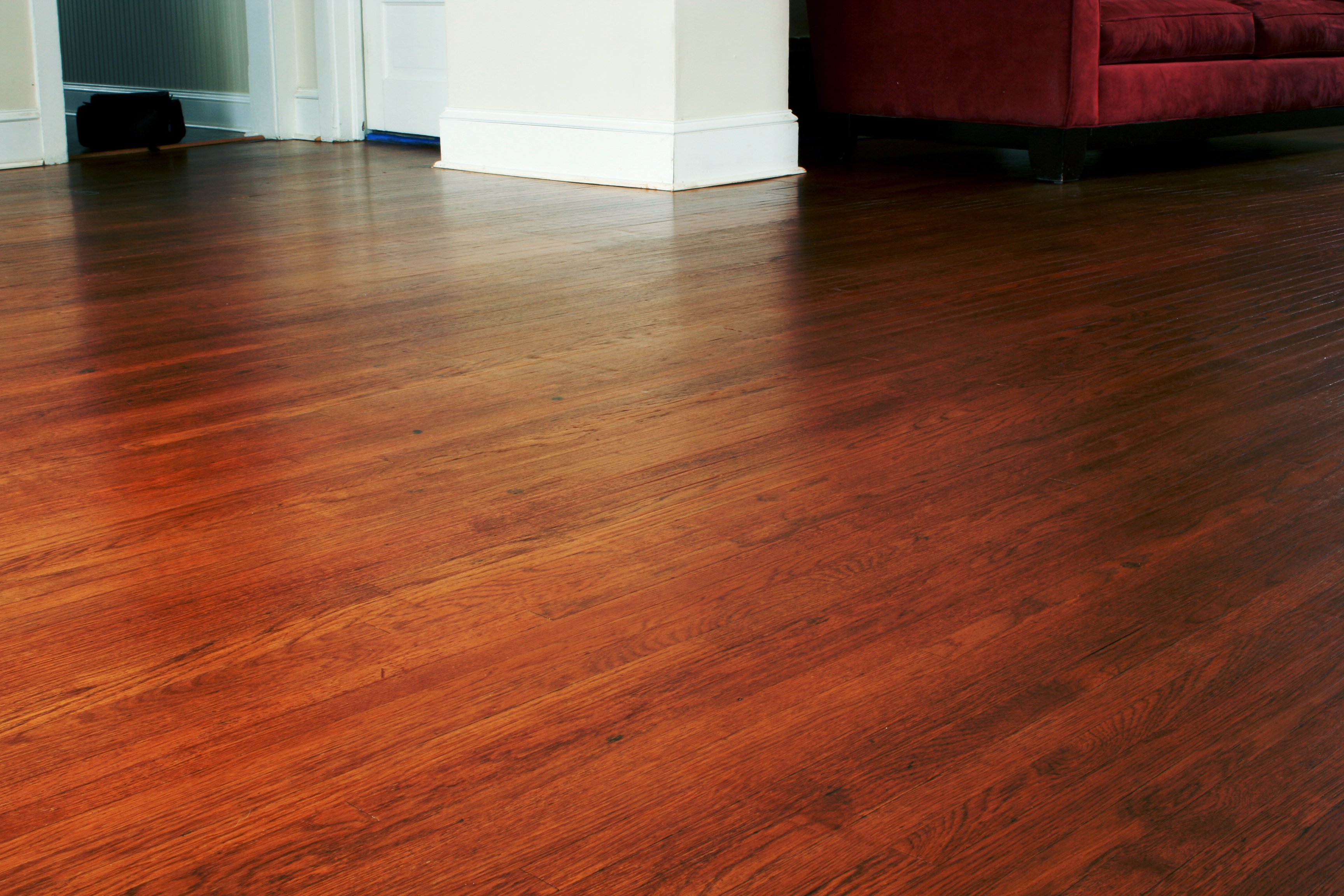Common Causes of Uneven Wood Floors
First, let’s talk about the common causes of uneven wood floors. Understanding the underlying cause of the unevenness is crucial in determining the appropriate solution and ensuring a level and stable wood floor.
- Moisture Imbalance: One of the most common causes of uneven wood floors is an imbalance in moisture content. Wood is a natural material that absorbs and releases moisture based on the surrounding environment. If there is excessive moisture in the air, the wood will absorb it and expand, causing the floor to become uneven. On the other hand, if the air is too dry, the wood will release moisture and shrink, resulting in gaps between the floorboards.
- Improper Installation: Another common cause of uneven wood floors is improper installation. If the floorboards are not installed correctly, they may not be level or properly aligned with each other. This can lead to an uneven surface that is noticeable when walking or placing objects on the floor. Additionally, if the subfloor is uneven or not properly prepared before installation, it can cause the wood floor to be uneven as well.
- Structural Issues: Sometimes, uneven wood floors can be a result of underlying structural issues in the building. If there are problems with the foundation or support beams, it can cause the floor to sag or slope in certain areas. This can be particularly noticeable in older buildings or those that have experienced significant settling or movement over time.
- Wear and Tear: Over time, wood floors can naturally become uneven due to wear and tear. Heavy foot traffic, furniture movement, and the weight of appliances or other objects can cause the floorboards to shift or become damaged. This can result in an uneven surface that may require repair or replacement to restore its level.
- Subfloor Issues: The condition of the subfloor can also contribute to uneven wood floors. If the subfloor is not flat or has structural issues, it can cause the wood floor to be uneven as well. Additionally, if the subfloor is made of a different material than the wood flooring, such as concrete or plywood, it can lead to variations in height and level.

How to Identify and Assess Uneven Wood Floors
Wood floors can add warmth and beauty to any home, but over time, they may develop unevenness. Uneven wood floors can be both unsightly and potentially hazardous. In order to address and correct the issue, it is important to first identify and assess the unevenness. Here are some steps to help you with this process:
Visual Inspection:
Start by visually inspecting the wood floor. Look for any noticeable signs of unevenness, such as gaps between the floorboards, raised or sunken areas, or a sloping appearance. Take note of the specific areas that seem to be uneven.
Walk Test:
To further assess the unevenness, walk across the entire floor and pay attention to any areas that feel different underfoot. Uneven floors may feel bouncy, saggy, or wobbly in certain spots. Make a mental note of these areas.
Use a Level:
A level tool can provide a more accurate measurement of the floor’s unevenness. Place the level on different areas of the floor and observe if it lies flat. If the bubble in the level consistently leans to one side, it indicates that the floor is not level.
Measure with a Straightedge:
Take a straightedge, such as a long piece of wood or a level, and place it across the floor. Look for gaps or spaces between the straightedge and the floor. If there are significant gaps, it suggests that the floor is uneven in those areas.
Check for Subfloor Issues:
Uneven wood floors can be caused by problems with the subfloor. Inspect the subfloor for any signs of damage, such as rot, water damage, or unevenness. Addressing subfloor issues may help resolve the unevenness of the wood floor.
Consult a Professional:
If you are unsure about the severity or cause of the uneven wood floors, it is advisable to consult a professional. A flooring specialist or contractor can assess the situation and provide expert advice on the best course of action.
DIY Fixes for Uneven Wood Floors
Identifying the Cause of Unevenness
Uneven wood floors can be caused by various factors such as moisture imbalance, structural issues, or simply natural settling over time. Before attempting any DIY fixes, it is important to identify the root cause of the unevenness to ensure an effective and long-lasting solution.
Leveling with Shims
One common DIY fix for minor unevenness in wood floors is using shims. Shims are thin, wedge-shaped pieces of material that can be inserted between the floorboards and the subfloor to level out any gaps or uneven areas. By strategically placing shims in the problem areas, homeowners can achieve a more even surface for their wood floors.
Sanding and Refinishing
For slightly more significant unevenness, sanding and refinishing the wood floor can be a viable solution. This DIY fix involves sanding down the higher spots of the floor to create a smoother and more level surface. After sanding, the floor can be refinished with a protective coat of varnish or stain to restore its original appearance.
Using Floor Leveling Compound
In cases where the unevenness is more pronounced, floor leveling compound can be an effective DIY fix. This self-leveling compound is designed to fill in gaps, cracks, and uneven areas in wood floors. It is poured onto the problem areas and levels itself out, creating a smooth and even surface once it dries. However, it is important to follow the manufacturer’s instructions and guidelines when using floor leveling compound to ensure proper application.
Replacing Damaged Floorboards
In some instances, the unevenness of a wood floor may be due to damaged or warped floorboards. If this is the case, replacing the damaged boards can help restore the floor’s evenness. This DIY fix involves carefully removing the damaged boards and replacing them with new ones that are of the same size and type. However, this method may require more advanced DIY skills and tools.
Seeking Professional Help
While these DIY fixes can be effective for minor to moderate unevenness in wood floors, it is important to note that more extensive or complex issues may require professional assistance. If the unevenness persists or worsens despite DIY efforts, it is advisable to consult a flooring professional who can assess the situation and recommend the most appropriate solution.
When to Call a Professional for Uneven Wood Floors
Wood floors can add beauty and warmth to any home, but over time they can become uneven and develop various issues. While some minor unevenness can be fixed with simple DIY methods, there are instances where it is essential to call a professional for assistance. Here are some scenarios where it is recommended to seek the expertise of a professional for uneven wood floors.
Extensive Unevenness: If your wood floors have significant unevenness, such as noticeable sloping or sagging in certain areas, it is crucial to call a professional. This could indicate structural problems with the subfloor or underlying foundation, which require specialized knowledge and equipment to address properly. A professional can assess the situation and determine the best course of action to ensure the floor’s stability and durability.
Water Damage: Water damage is a common cause of uneven wood floors. Whether it’s due to a leaky pipe, flooding, or excessive moisture, water can cause the wood to warp, buckle, or cup. When the damage is extensive or affects a large area, it is advisable to call a professional. They can identify the source of the water damage, repair or replace the affected sections, and take measures to prevent future issues.
Subfloor Issues: The subfloor provides the foundation for your wood floors, and any problems with it can result in unevenness. If you notice soft spots, squeaking, or a bouncy feeling when walking on the floor, it could be a sign of subfloor damage. Calling a professional is necessary in such cases as they can accurately assess the subfloor’s condition, repair or reinforce it if needed, and ensure proper installation of the wood flooring.
Professional Expertise: Even if the unevenness seems minor and does not fall under the above categories, it is still advisable to consult a professional. They have the experience and knowledge to identify underlying causes that may not be apparent to the untrained eye. A professional can provide valuable insights, recommend appropriate solutions, and prevent potential issues from escalating.
Can/Should You Put Hardwood on an Uneven Floor? – Ready To DIY
Uneven or Sagging Floors Foundation Repair in AL u0026 TN AFS Repair
3 Options for Uneven Floor Repair DoItYourself.com
Warped Wood Floors
Do Uneven Floors Mean Foundation Problems? – Ashworth Drainage
LAYING NEW WOOD FLOORING OVER ORIGINAL, UNEVEN FLOORBOARDS u2014 luke
How to Diagnose and Repair Sloping Floors – HomeAdvisor
Related Posts:
- How Thick Is Engineered Wood Flooring
- Real Wood Flooring In Kitchen
- Wood Floor Kitchen Cabinet Combination Designs
- Solid Wood Floor Repair Kit
- Dark Wood Floor Finishes
- Light Oak Solid Wood Flooring
- Grey Wood Floor In Bathroom
- Pledge Wood Floor Cleaner Spray
- Wide Plank Wood Flooring Cost
- Light Wood Flooring Ideas
